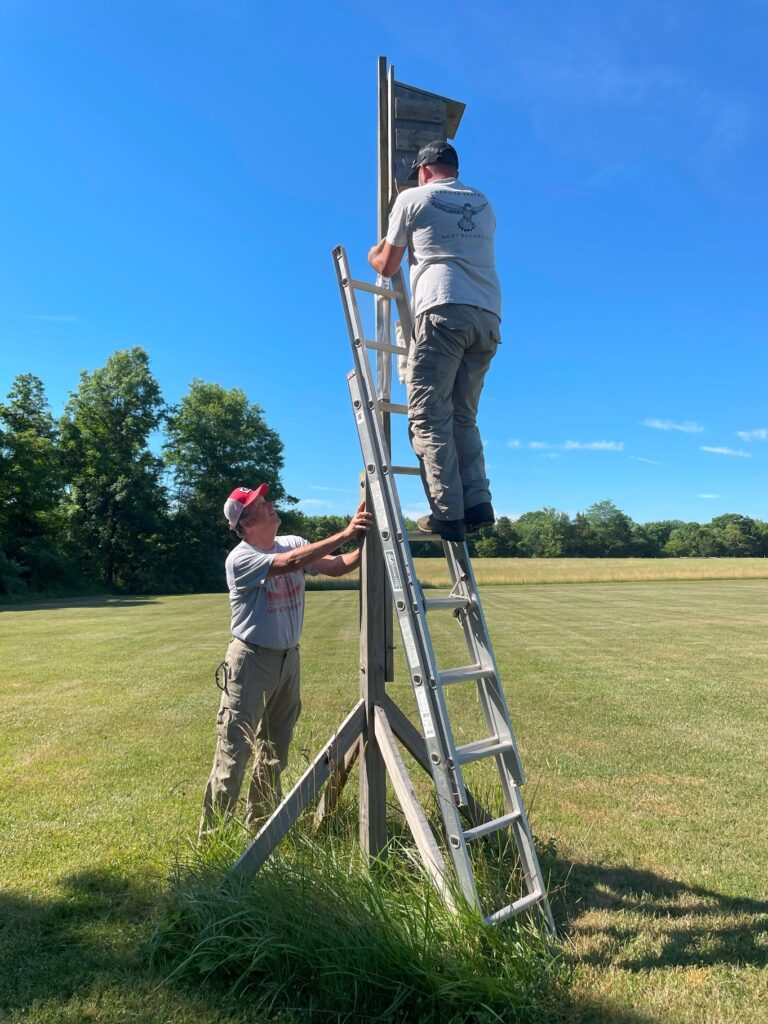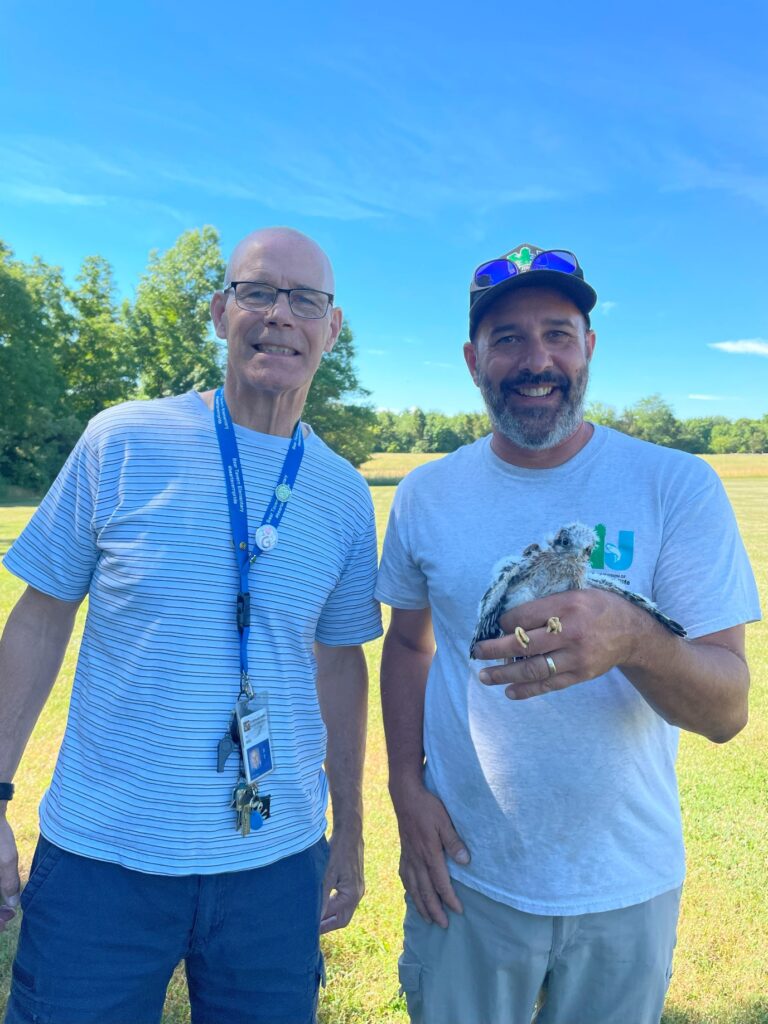For the first time, a pair of American kestrels nested at Bear Tavern Elementary School, and successfully raised chicks.
In 2019, Friends of Hopewell Valley Open Space (FoHVOS) partnered with the elementary school to install a man-made nest box for American kestrels at the school’s campus. This nest box installation is part of a larger Hopewell Valley-wide initiative to provide nesting sites for kestrels, a state-threatened bird species.

Yardley, PA resident, Mark Kearney, is a long-term volunteer at FoHVOS and became part of the nest box monitoring program in 2021. Since then, he has faithfully monitored Bear Tavern’s nest box and two boxes at Fiddler’s Creek Preserve, for potential nesting activity. In 2022, Mark did not observe any activity at this box, but in 2023, he spotted a female kestrel – perched on top of the nest box.
FoHVOS coordinates with New Jersey Department of Fish and Wildlife (NJDFW) biologists sharing data on nest box locations, nesting attempts, and egg and hatch dates. State biologists also band all kestrel nestlings in the program around the age of three weeks.
On June 28, the Bear Tavern kestrel chicks were banded by state biologists at the school. Four partially downy and mostly feathered chicks were removed from their nest box in soft cotton bags. Once on the ground, the kestrel chicks were removed from their bag and got a small aluminum ring-like band, with a unique number code, placed around their leg. This band provides a specific identification number for each individual. Data, including weight and sex of each bird, is also recorded. The scientific practice of bird banding allows biologists to better understand the ecology – such as survival rate, dispersal, and genetic lineage of these birds, which ultimately aids in their recovery.

FoHVOS’s American kestrel nest box program was initiated in 2019, and to date, 50 man-made nesting boxes have been installed for kestrels throughout the Valley. This season, there are currently 21 nest boxes that have chicks – an impressive number, when you estimate about four to six chicks per nest on average. By the end of July, FOHVOS will have the total number of kestrel chicks that have hatched from our nest boxes for this season (should we get a Valley-wide poll going?)
American kestrels are New Jersey’s smallest falcon. Adept at hunting insects, reptiles, and rodents, they occupy open fields, and nest in secondary cavities like old nesting sites created by woodpeckers, or natural cavities in trees. Grassland habitat and nesting sites for these species drastically declined with changing land use; the development of farmland and the practice of dead tree removal both played an integral role in the species decline and threatened conservation status in New Jersey. Nest box programs such as FoHVOS’s are key to stabilizing the species’ population throughout the state.
If you would like to learn if your property is appropriate to host a kestrel nest box, please contact Beth Craighead, Senior Land Steward at [email protected] or call 609-730-1560.







